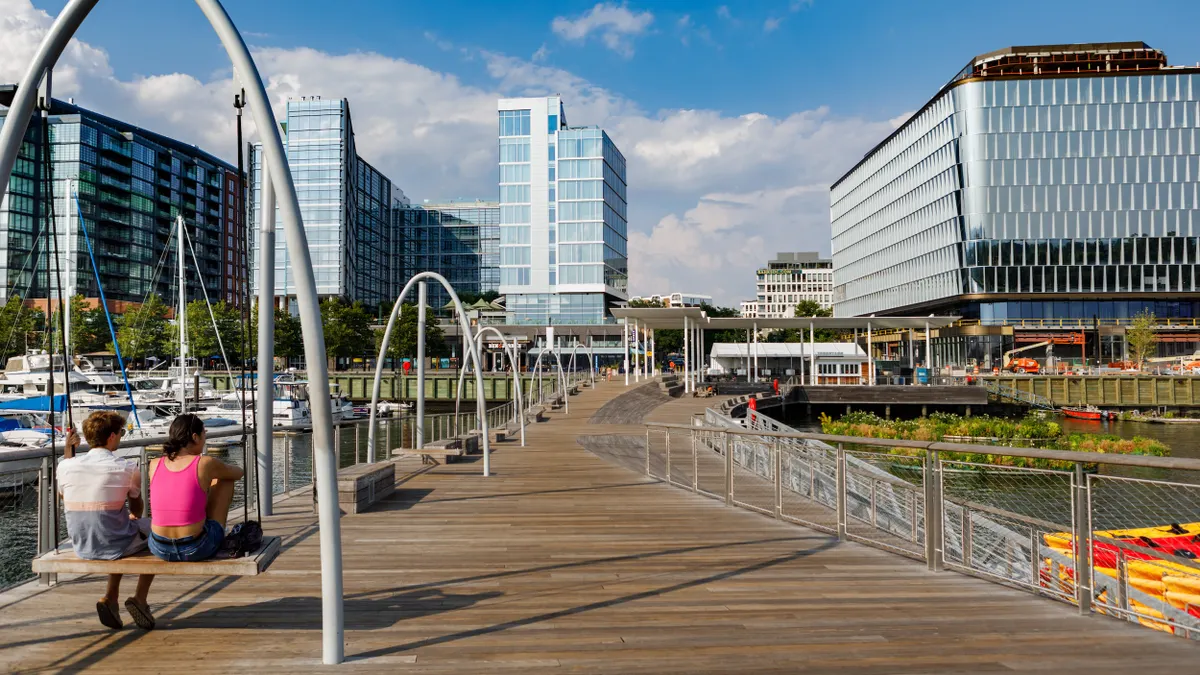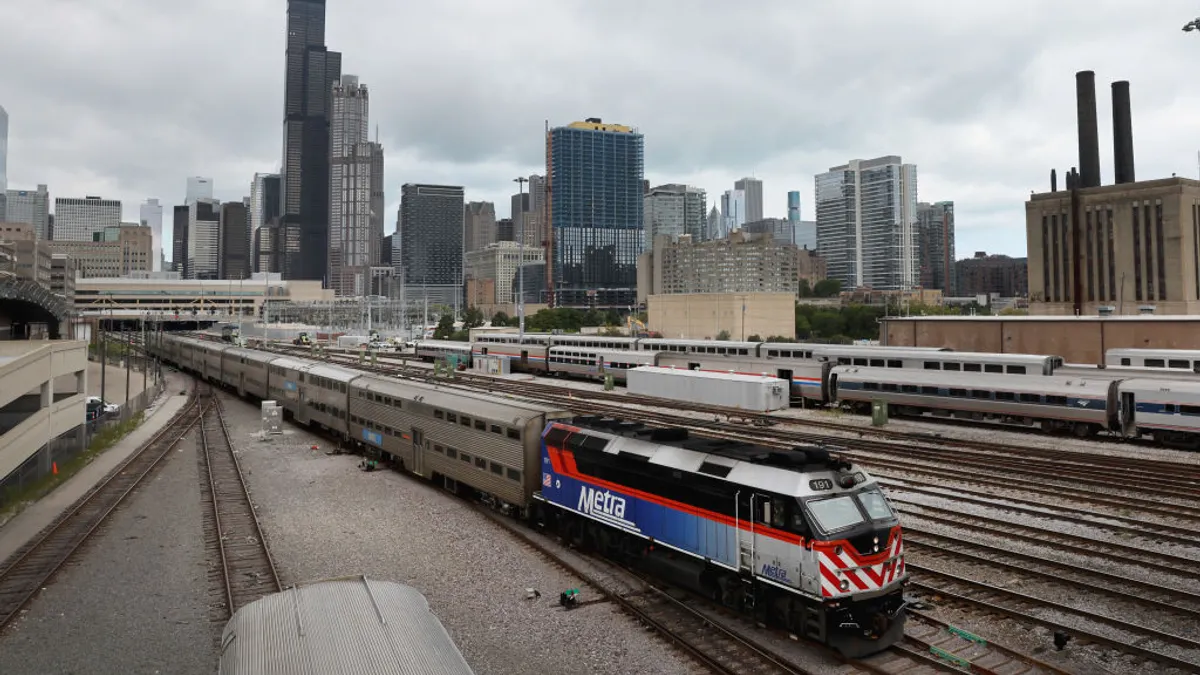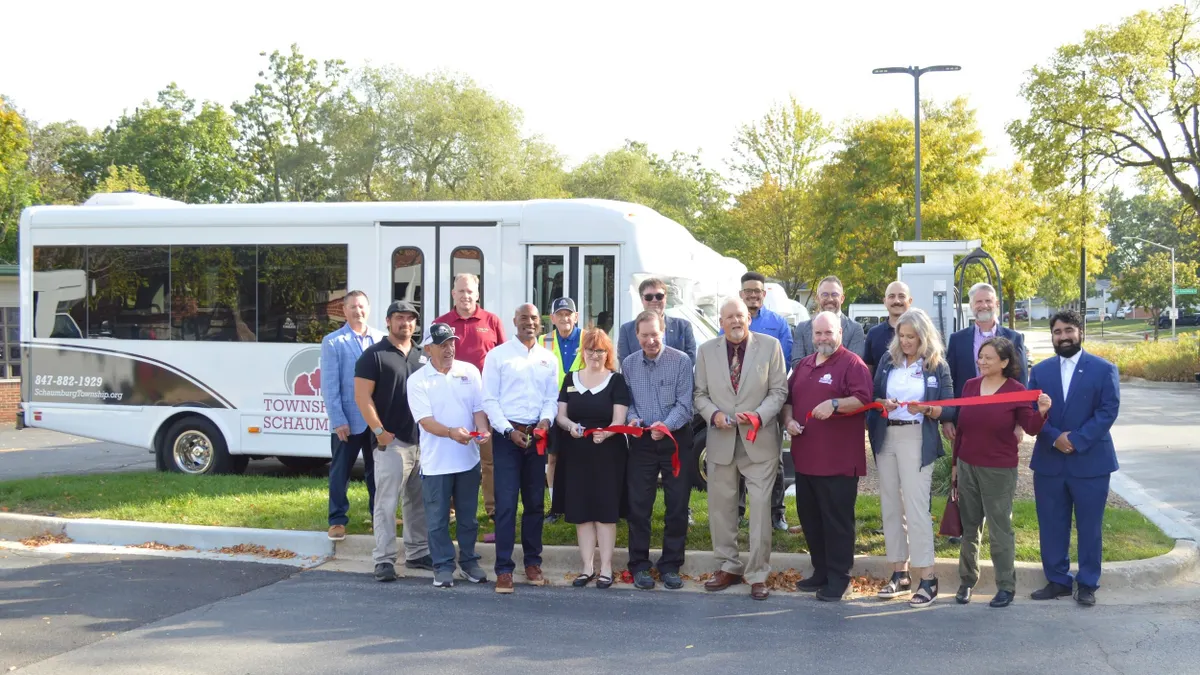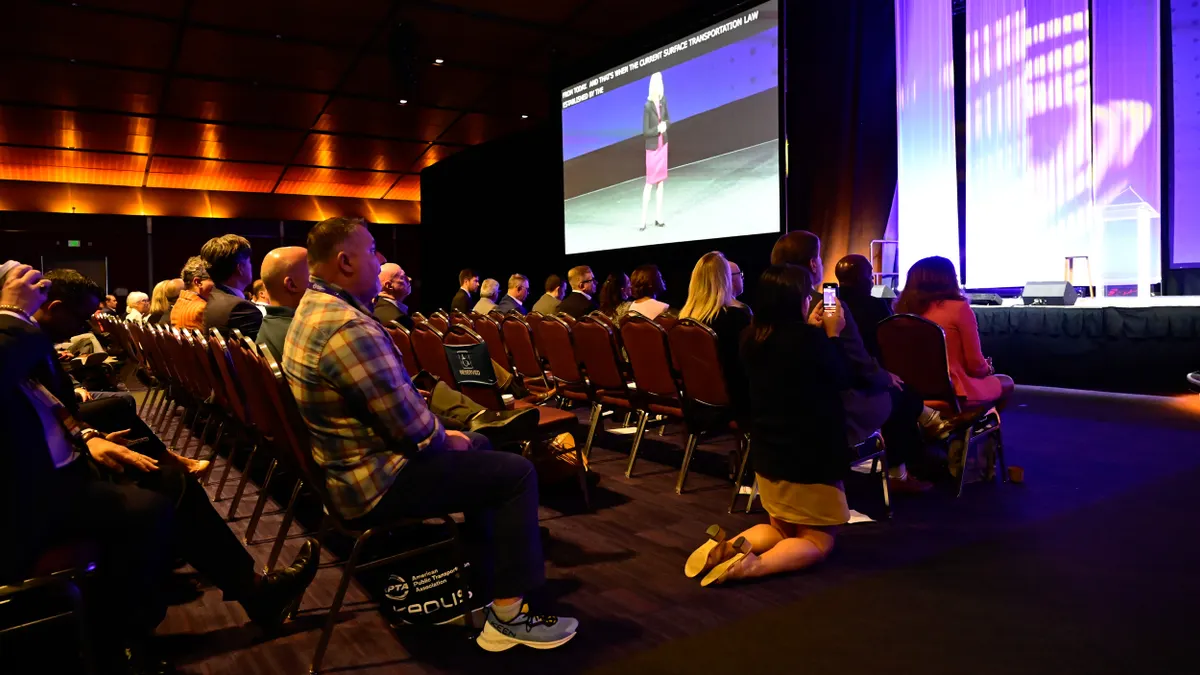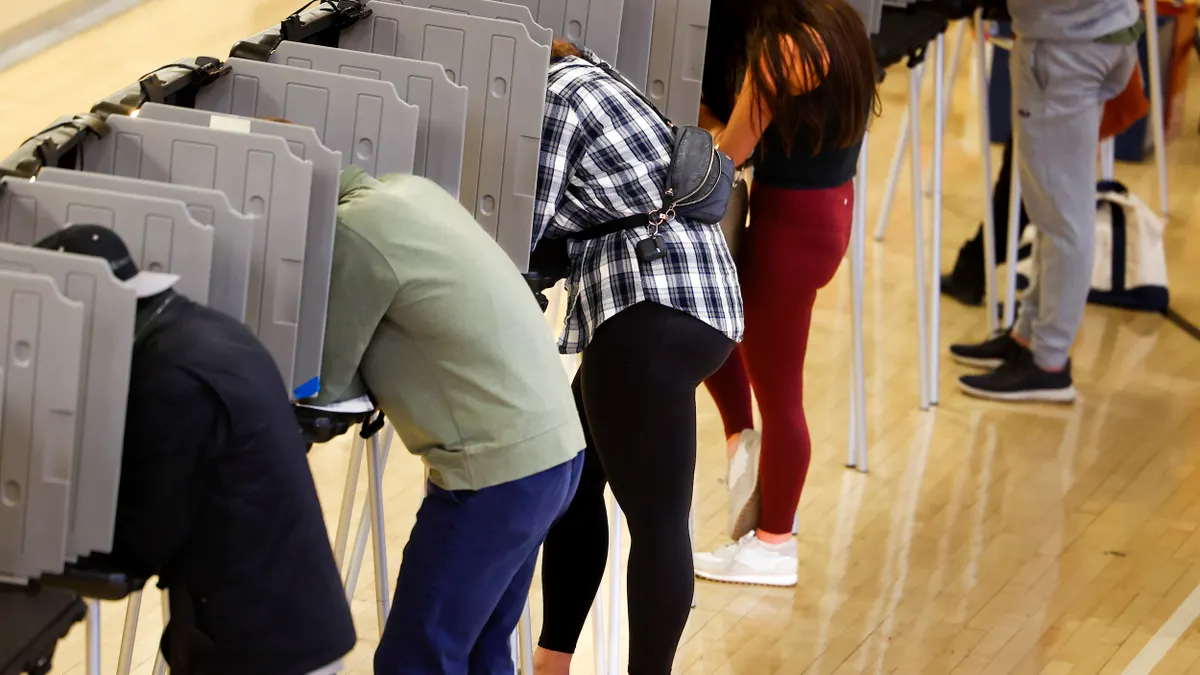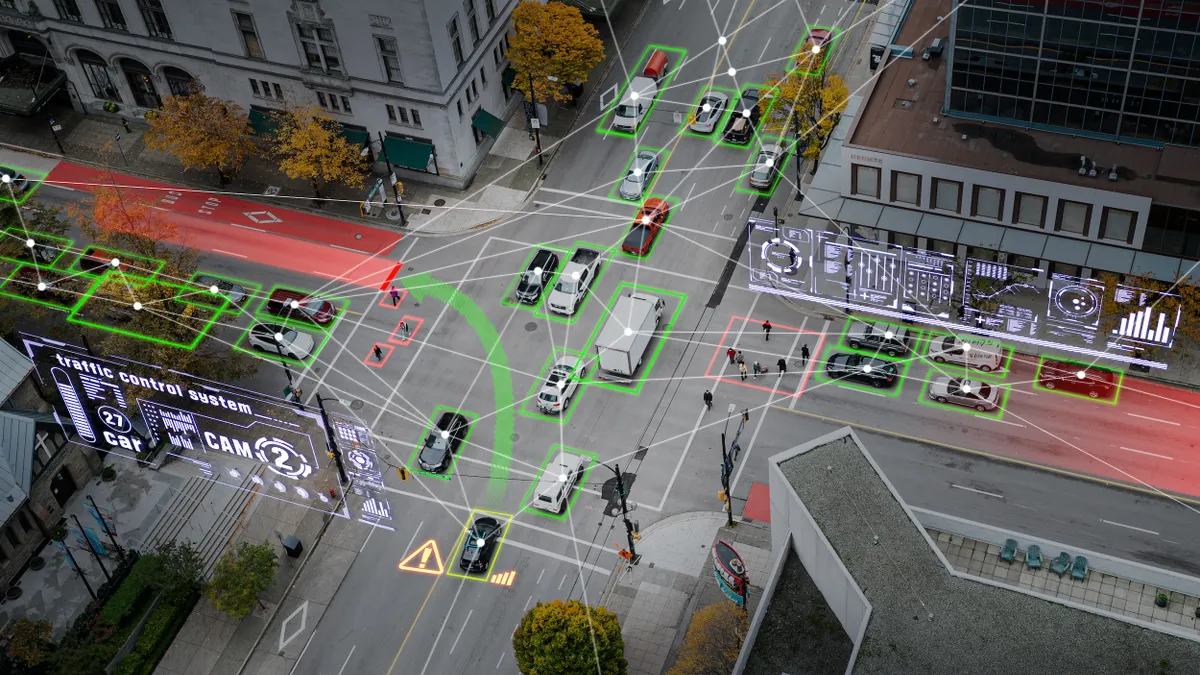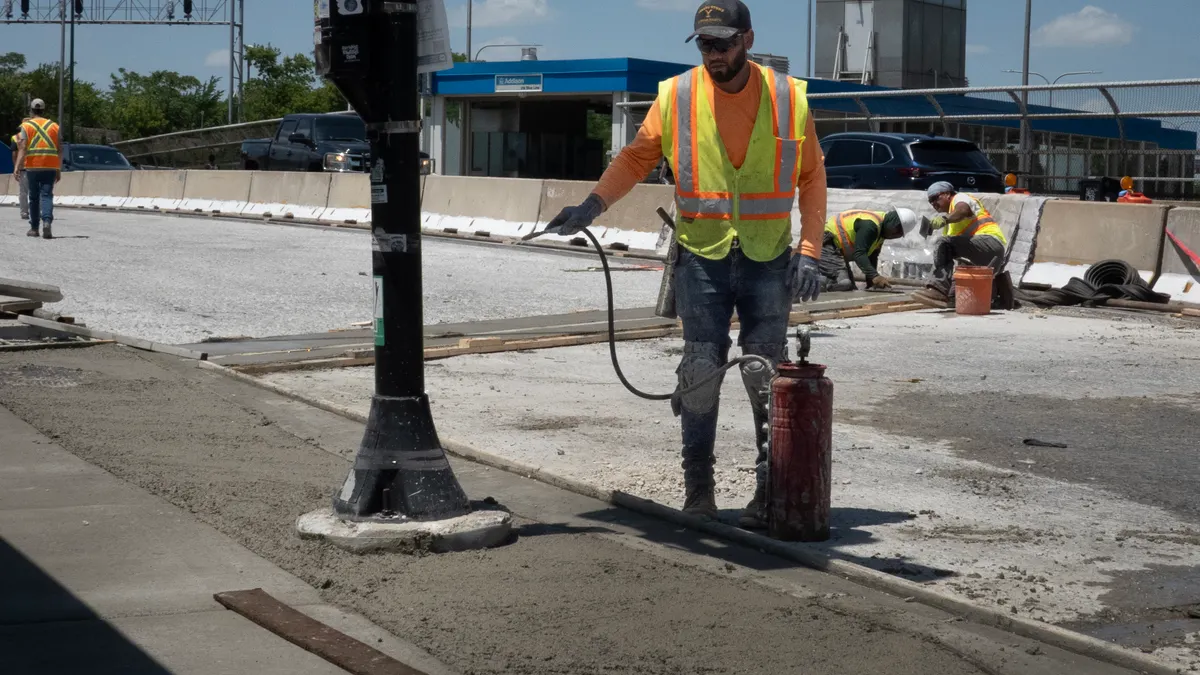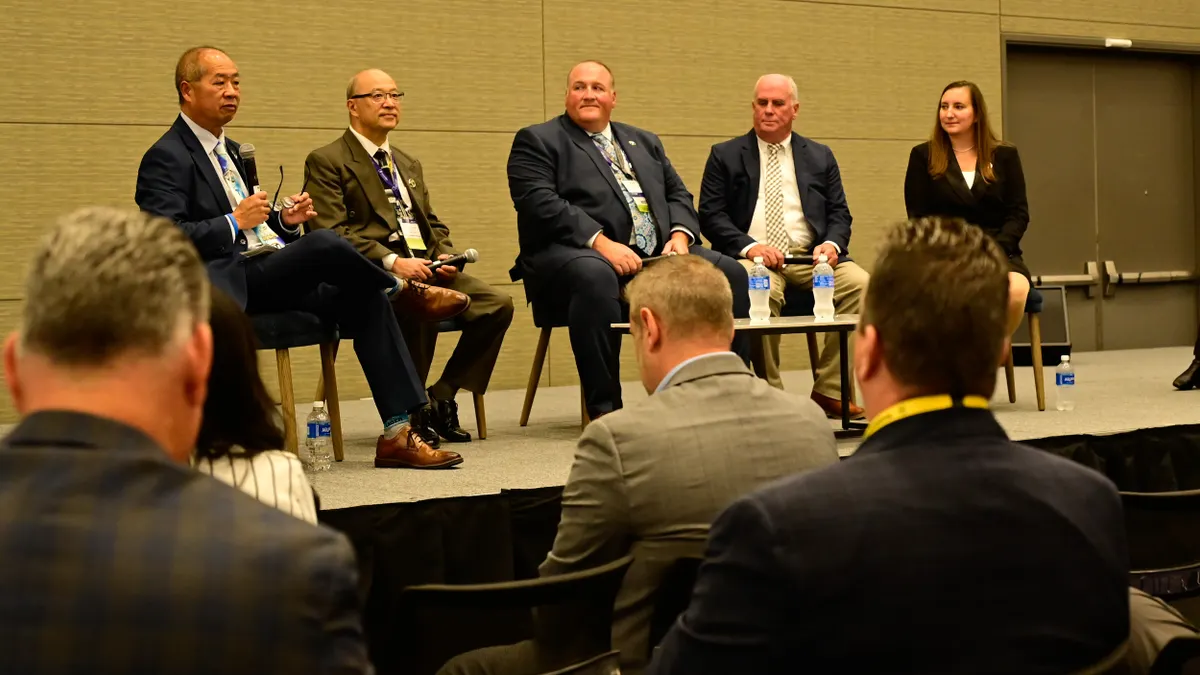The New York City Council voted Wednesday to regulate ride-hailing apps like Uber and Lyft, becoming the first city in the United States to do so.
The new rules include temporarily ending the issuing of new for-hire vehicle (FHV) licenses and adding a new license category for the companies. The new license category covers companies that have at least 10,000 trips per day, which must apply for a two-year license from New York’s Taxi and Limousine Commission (TLC) and submit a business plan to demonstrate a need for service.
The city will also include a drivers' minimum wage requirement and provide for a year-long study of the industry. Following the vote, Mayor Bill de Blasio said on Twitter he will sign the legislation.
"The unchecked growth of app-based for-hire vehicle companies has demanded action — and now we have it," de Blasio wrote. "More than 100,000 workers and their families will see an immediate benefit from this legislation. And this action will stop the influx of cars contributing to the congestion grinding our streets to a halt."
Advocates said the bills would raise the quality of life for drivers, many of whom they said live at or below the city’s poverty level. But critics echoed previous accusations that the regulations would signal a return to the "bad old days" of poor service, especially in the outer boroughs. Both Uber and Lyft released statements shortly after the vote saying it was the wrong choice.
"The City's 12-month pause on new vehicle licenses will threaten one of the few reliable transportation options while doing nothing to fix the subways or ease congestion," an Uber spokesman said.
"These sweeping cuts to transportation will bring New Yorkers back to an era of struggling to get a ride, particularly for communities of color and in the outer boroughs," Lyft Vice President of Public Policy Joseph Okpaku said. "We will never stop working to ensure New Yorkers have access to reliable and affordable transportation in every borough."
New minimum wage to help drivers out of poverty?
Under the new legislation, drivers must be paid a minimum wage of $17.22 an hour based on the findings of a TLC report. Lyft has disputed that it underpays its drivers, arguing in a June letter to the TLC that its median gross pay for drivers is $24.14 per hour.
During council's vote, Council Member Brad Lander said that of those who drive for app-based ride-hailing companies, around two-thirds work full time but 85% of them do not make a living wage. Of those, Lander said, 40% are eligible to receive Medicaid due to their low incomes.
He said the new minimum wage is a "real game-changer." "It means a significant increase, maybe $5,000 a year, for folks struggling to pay their rent and feed their families while they work hard to provide transportation to folks in New York City," he said.
And Lander said that while a cap may mean a slightly longer wait for a ride from an app-based company, of around 12-15 seconds, that should be a small price to pay. "Twelve seconds is long enough to wait to lift tens of thousands of New Yorkers out of poverty," he said.
"What happened today didn't just set a precedent for New York City, it set a precedent for the entire world as app companies like Uber and Lyft use technological innovation to return us to a time of sweated labor, destroying lives and livelihoods across the planet."

Bhairavi Desai
Executive director, New York Taxi Workers Alliance
The TLC released its report with New York's minimum wage set to hit $15 an hour at the end of this year, with the city joining the likes of Seattle and San Francisco in at least examining driver pay. And it could be problematic to offer a base pay rate, given the dynamic nature of the ride-share model as prices shift and drivers set their own schedules.
Driver advocate groups hailed the change. The minimum wage caps a two-year campaign by the Independent Drivers Guild (IDG), which campaigned on behalf of 65,000 drivers for apps like Uber and Lyft in New York City to close what it called the "minimum wage loophole." Over that two-year campaign, IDG collected 16,000 signatures for its petition, emailed and called city officials several thousand times and distributed flyers.
Here's a rally outside City Hall happening today. The New York City Council is slated to vote on a package of regulations for ride-hailing companies like Uber, which includes the imposition of a one-year cap on new licenses and a minimum wage for drivers. pic.twitter.com/yF86bJjVW3
— Patrick Manning (@PatrickDManning) August 8, 2018
"Workers and New York leaders made history today," IDG Executive Director Ryan Price said in a statement. "It's not easy taking on Silicon Valley behemoths, but we kept on fighting for what we know is right and today the workers prevailed. We are thankful to the New York City officials who listened to the stories of drivers who are struggling to support their families and stood by us in this fight."
Ride-hailing has also been blamed for a spike in suicides by taxi drivers in New York City — of which there have been six this year alone. The industry has been blamed for reducing the number of available fares, meaning taxi drivers work longer hours for less take-home pay. Council Speaker Corey Johnson said during the vote that elected leaders must do all they can to stop those driver suicides and do so by paying closer attention to ride-hailing.
The New York Taxi Workers Alliance (NYTWA), which represents 21,000 taxi drivers and was supportive of the measures, said they hope it sparks a wider conversation in cities about the relationship between taxi companies and ride-hailing.
"What happened today didn't just set a precedent for New York City, it set a precedent for the entire world as app companies like Uber and Lyft use technological innovation to return us to a time of sweated labor, destroying lives and livelihoods across the planet," NYTWA executive director Bhairavi Desai said in a statement.
Leaders look to 'level the playing-field' between taxis and ride-hailing
During its year-long study working alongside the New York City Department of Transportation (NYCDOT), the TLC will explore how ride-hailing can be put in what Council Member Steve Levin described during the vote as an "adaptive, forward-thinking regulatory structure that balances the need for rider access with our goal of maintaining a living wage and fair transit system."
Council Member Ydanis Rodriguez said at a press conference before the vote that the city wants to "level the playing field for the taxi industry" by making sure that the service is of a good standard while both drivers and customers are taken care of.
New York City previously considered taking steps to regulate ride-hailing in 2015, and since then Levin said the number of cars on the streets being driven for the companies has almost doubled from 67,000 to 130,000. But, he noted, there has not been a mechanism in place to keep track of them, as there is with the ubiquitous yellow taxis.
"The fact of the matter is that the taxi industry has capped the number of vehicles on the road for 70 years when it comes to yellow cabs," Levin said during the vote. "But we have not done the same with for-hire vehicles, and as a result, since the app-hail revolution we have seen companies grow exponentially without any long-term, citywide plan in place to address it."
But the study came in for some criticism from some council members, who felt that any analysis should be done first, before any further action like a cap. "I’m not sure when we decided to put a freeze or a cap or a pause on something to do a study," Council Member Mark Gjonaj said during the vote. "Typically, we perform studies, and that’ll determine the course of action we should take."
"This industry that has expanded has provided a great service, and I think perhaps if a study had been done prior to the legislation, we would have in fact seen what it is that we needed to do to bring some equity to the situation," Council Member Inez Barron said.
The bill providing for the TLC study and the one-year freeze was the only part of the package of legislation to receive any "no" votes. It still passed 39-6.
More than 100,000 workers and their families will see an immediate benefit from this legislation. And this action will stop the influx of cars contributing to the congestion grinding our streets to a halt.
— Bill de Blasio (@NYCMayor) August 8, 2018
Calls for equitable service
One of the major arguments against capping ride-hailing is that it has provided service to the city's outer boroughs and majority-minority neighborhoods, where yellow taxis are sometimes reluctant to go.
Before the vote, New York Urban League President and CEO Arva Rice wrote in an opinion piece for Crain's New York that such a cap would bring back "the bad old days" when people of color "had a hard time hailing." And council members raised those concerns again, noting that Uber and Lyft have helped provide service to areas that are not easily accessible.
"As we move to provide a lifeline to the taxi industry, we must also recognize the pain they have caused communities of color with ride refusals," Council Member Donovan Richards said. "Yes, bias indeed fueled communities of color to download apps like Lyft and Uber, because they don't leave us stranded, hands flapping in the wind on street corners waiting for a ride in our city."
In the days leading up to the vote, de Blasio's administration created a new TLC office aimed at reducing discriminatory ride refusals by taxi and other for-hire vehicle drivers. Levin said discrimination is something the city takes seriously.
"We need to redouble our efforts, consistently commit ourselves to root out discrimination every single time we see it. We can no way countenance it or allow it to continue, and the commitment from this council to address this issue is ongoing and very serious," he said.
What the future holds
Johnson and others emphasized that these measures will not take away any existing service from New Yorkers, and it will give the city time to reassess what is on offer and how it is regulated. "No one's trying to kill Uber," Council Member Justin Brannan said during the vote. "We're just trying to get a handle on this industry and get some equity."
And it appears the companies are already exploring their options for how to proceed. In an interview with The Washington Post, Uber spokesman Josh Gold said the company will look to add to its approximately 80,000 existing for-hire vehicle licenses in the city by recruiting those who drive for other companies and in different situations.
Johnson noted that the ride-hailing companies were "real, full stakeholders in this," that were "very much involved" in the process of drafting the legislation. And given that Johnson said they had a "seat at the table," it is likely that Uber, Lyft and others will continue to be involved.
As for other cities that may want to follow New York City’s lead, Johnson had one piece of advice at the press conference: "good luck."
"These are complicated issues, and the dynamic in every city is different because every city is different as it depends on the transportation network, it depends on the vehicles coming into the city, it depends on if they have a congestion pricing scheme, it depends on the level of mass transit, it depends on density in those cities. It depends on a lot of things," Johnson said.







